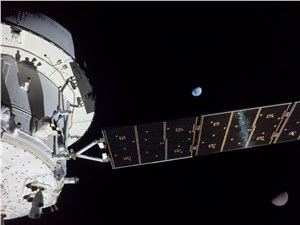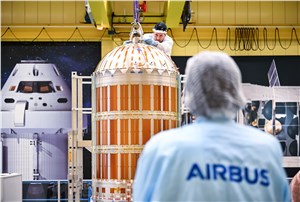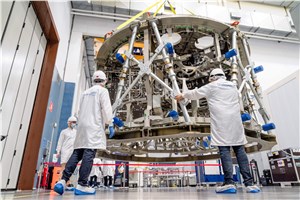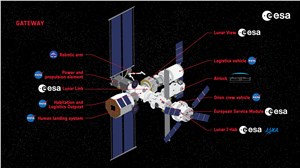





In a few days, ESA’s fourth European Service Module will leave the integration halls of Airbus in Bremen, Germany, setting sail across the Atlantic Ocean in the next step of its journey. The module will propel NASA’s Orion spacecraft towards the Moon during Artemis IV, supplying the crew with water, air, electricity and a comfortable temperature throughout their voyage.
Once the module arrives at NASA’s Kennedy Space Center in the United States, engineers will connect it to the crew module and its distinctive European-built ‘X-wing’ solar arrays to form the complete Orion spacecraft for the Artemis IV mission.
Artemis IV will also bring ESA’s Lunar I-Hab habitation module to lunar orbit, where it will join NASA’s habitation and propulsion modules to form the international Gateway station, humankind’s next outpost around the Moon.

A Global and Regional Analysis: Focus on Platform, Battery Type, Power, and Country Level Analysis
Download free sample pagesThe European Service Module is a truly collaborative endeavour: the joint effort of engineers across more than 20 companies and 10 different European countries, working together to go forward to the Moon.
“ESM-4 will play a key role as the Artemis IV mission is due to deliver the International Habitation Module (Lunar I-Hab) of the Lunar Gateway space station. This state-of-the-art hardware, developed by Airbus Defence and Space and its subcontractors across Europe, demonstrates our ability to contribute to major international partnerships,” says Daniel Neuenschwander, Director of Human and Robotic Exploration at ESA.
The journey so far
Like the three modules before it, the journey of this European Service Module began in the cleanrooms of Thales Alenia Space in Turin, Italy. Here, engineers built the module’s backbone structure – the precise and robust framework that would later hold all its essential systems.
In June 2022, this structure arrived at Airbus’ site in Bremen, Germany, where engineers from across Europe began the intricate process of turning it into a fully functional spacecraft. Over many months of integration and testing, they installed and connected the module’s 11 km of wiring, 33 engines, and several tanks holding over 8000 litres of fuel as well as water and air for astronauts.
Life in lunar orbit
NASA’s Artemis IV mission will take the next step in building the lunar Gateway and bring a crew to the station for the first time.
Once Orion is in space, its powerhouse – the European Service Module – will fire its 24 reaction control thrusters to turn around and attach itself to ESA’s Lunar I-Hab. The module will then tug Orion and its crew of four astronauts into lunar orbit, where Lunar I-Hab will be connected to the first two modules of the Gateway: NASA’s propulsion and habitation modules.
Together with NASA’s habitation module, Lunar I-Hab will offer enough room on the Gateway for four astronauts staying 90 days at a time. This will allow part of the crew to live and conduct research in lunar orbit, while others descend to the surface for science and exploration.
With each European Service Module, Europe provides the essential power and life-support systems that make crewed missions to deep space possible. The delivery of ESA’s fourth European Service Module marks another step in Europe’s ongoing contribution to bringing humankind back to the Moon.